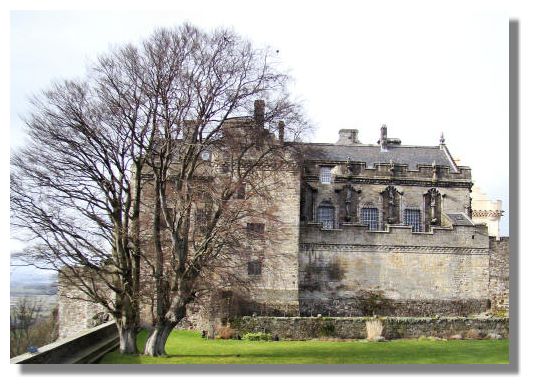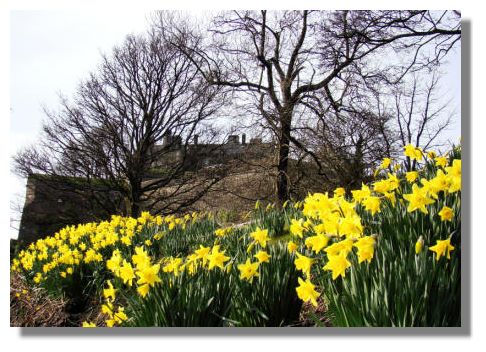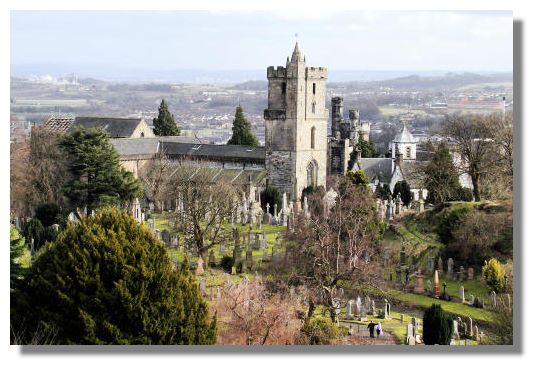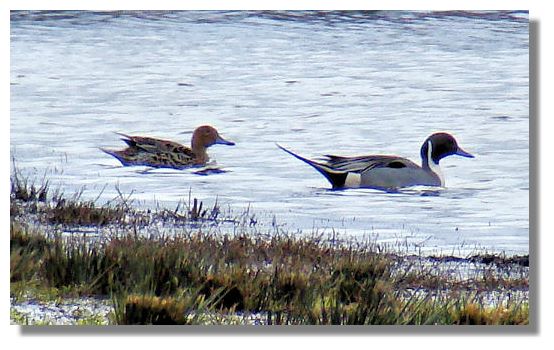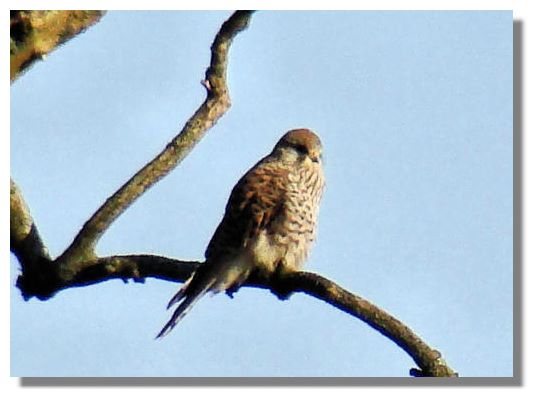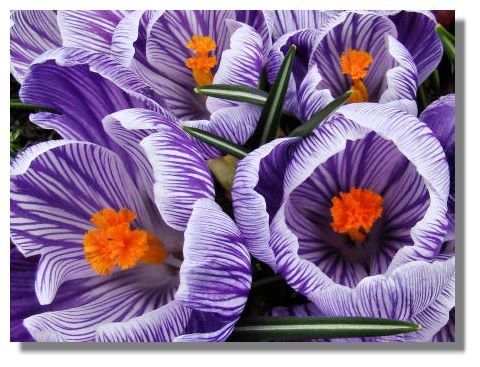The Rampant Scotland Newsletter includes a number of photographs which illustrate the weather and the seasons, plus the flora and fauna of the current week around Scotland. This separate "colour supplement" displays some more pictures, in a larger format. Here is this week's crop of Scottish views!
It was a dull, grey last Friday when this photo of Stirling Castle was taken. The bare branches of the tree, however, allow a clearer view of the Palace building which was under construction in the 1540s for King James V. The classical facade, with its ornate statues, was one of the earliest in Britain and was probably due to the French masons employed by James. The sculptures include representations of Planetary Gods, the Devil and King James himself.
Beneath Stirling Castle, however, banks of flowering daffodils brightened the scene considerably.
Below Stirling Castle, looking towards the city itself, is the Church of the Holy Rude, the last remaining Scots church to have staged a Coronation - that of the infant King James VI in 1567. He was 13 months old at the time and his mother, Mary Queen of Scots, had been forced to abdicate in his favour after she had married the Earl of Bothwell.
Pintails are slightly larger than the more common Mallard duck and many of the birds found in Scotland and the UK come from Iceland to over-winter, with about 28,000 individuals escaping the harsher climate further north. The distinctive plumage (and two elongated tail feathers) is sported by the male until after the breeding season. Then the moult between July and September, when and the colouring becomes similar to that of the female.
Kestrels are often seen hovering above hedgerows or embankments beside motorways, seeking out their prey with sharp eyes - and claws. But they also regularly perch on posts or walls - or as in this case, the bare branches of dead trees. Numbers of kestrels have declined, probably due to more intensive farming.
Teals are slightly smaller than Mallards and although some breed in Britain, most of the nearly 200,000 found in winter in the UK have come from Iceland and northern Europe, reaching these shores in October and November, leaving again in March. The bird on the left decided to do a bit of preening, just as the camera shutter opened...
These crocuses have featured on a number of occasions in this Colour Supplement over the last few weeks, initially as they first broke into bloom at the end of February, later as they rose above the snow and now fully open - so long as it is bright enough for them to unfurl their petals.If you want to look back at earlier editions of this Colour Supplement, there is an Index Page
